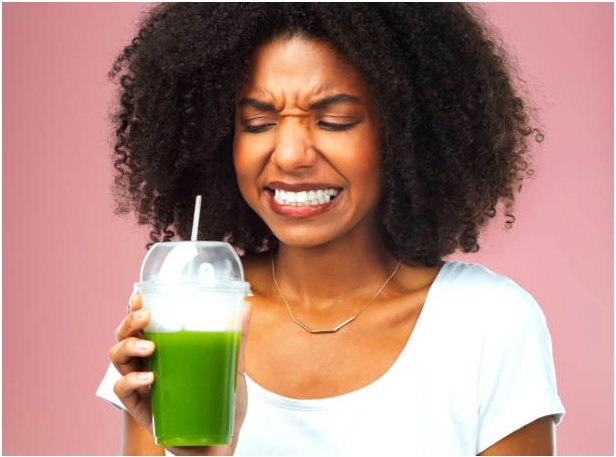Smoothies are good for you! They’re a great way to get your daily nutrients and vitamins. Smoothies can also help with weight loss, as they often contain fewer calories than traditional meals or snack options.
Smoothies are also supposed to be good for tummy. They are supposed to help you lose weight, get more nutrients into your body, and detoxify your system. But it turns out that smoothies can sometimes cause stomach ache.
How?
Why Smoothies Can Cause Stomach Discomfort
Too Much Fiber
Excessive fiber intake can overwhelm the digestive system, leading to bloating, gas, and discomfort. The digestive process involves breaking down food into smaller particles for absorption. Too much fiber can create a backlog, causing fermentation and gas production in the intestines.
Fiber also absorbs water in the digestive tract, which is generally positive as it helps maintain regular bowel movements. However, excess fiber without sufficient water intake can lead to dehydration and further exacerbate digestive issues.
High Sugar Content
There are many recipes on the internet that recommend adding sugar to your smoothie bowls or juices to make them sweeter. This is not the best idea if you want to avoid stomach discomfort or gas because sugar has no nutritional value whatsoever and can lead to insulin spikes which cause digestive discomfort such as cramps and diarrhea. If you do decide to add sugar to your smoothie bowl, try using Stevia instead!
Dairy Sensitivity
People who are sensitive to dairy foods can experience bloating, gas, cramps and diarrhea after drinking smoothies. The culprit is lactose, the sugar found in milk that causes your body to create more stomach acid when digested. This is why many people have trouble digesting milk as adults — they are still getting the same amount of lactose they did as infants.
Cold Temperature Sensitivity
If you’re sensitive to cold temperatures in general (like me), then you might want to steer clear of smoothies that contain ice cubes or frozen fruit because these items can cause symptoms like pain in your joints or muscles. Your body reacts negatively when exposed to extreme temperatures for too long so it’s best to avoid these ingredients altogether if possible.
Ingredients for Stomach-Friendly Smoothies
If you want to make a smoothie that’s not only good for your health, but also tastes great, you’re in luck. There are a few key ingredients you need to have on hand.
Low-Fiber Fruits and Vegetables
Strawberries, kiwi, mangoes, peaches, plums, apples, pears and bananas are excellent choices for smoothies that are low in fiber. The fiber content of these fruits can also help to balance out your blood sugar levels.
Natural Sweeteners
If you’re trying to avoid artificial sweeteners but still want a sweet treat, try using honey or Stevia natural sweetener instead. These options are safe for diabetics because they don’t raise blood sugar levels as much as other sweeteners do.
Non-Dairy Options
If you’re looking for a smoothie that isn’t milk, or you can’t tolerate dairy, try coconut milk instead. Coconut milk has a thicker consistency and is often used in the same way as milk. It’s also low in fat and calories and high in fiber.
Use Room Temperature Ingredients
If you have any ingredients that need to beat room temperature before blending, add them now and chill the blender for a few minutes before making your smoothie. This will help ensure uniformity and prevent some ingredients from heating up during blending, which can make them difficult to drink.
Tips for Easy Digestion
Smoothies are a great way to get the vitamins and minerals your body needs, but they’re tough on the digestive system. Here are some tips for easy smoothie digestion:
Blending Techniques
You will not be able to digest a smoothie if you don’t properly blend it. You need to blend your fruit and vegetables until they become a liquid or a paste. If you do not blend your smoothies well, then the digestive enzymes in your stomach will not break down the food properly, which can lead to gas, bloating and diarrhea. You also need to make sure that there are no chunks of food left in your drink because these can cause inflammation in the gut and irritate the digestive system.
Meal Timing
The best time to have a meal is after you have worked out. A person’s metabolism increases by around 20% right after exercising, so this is when the body needs nutrients most. If you go too long without feeding yourself after working out, then it becomes harder for your body to digest what it has eaten because there is less energy available for digestion.
Bottom Line
Smoothies are a staple in the healthy eating world. They are an easy way to get some of your fruits and vegetables in, while still getting your protein and carbs. They can be a great meal replacement as well. It’s also important to note that the tolerable smoothie intake amount varies among individuals. Factors such as age, sex, overall health, and specific health conditions influence how much a person can comfortably consume. If stomach discomfort persists, it’s advisable to consult a healthcare professional to rule out any underlying digestive issues.


